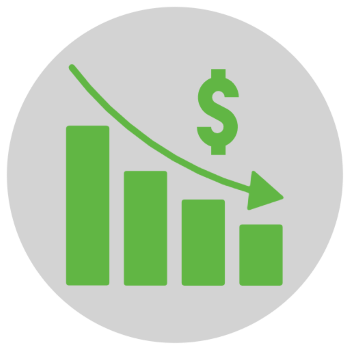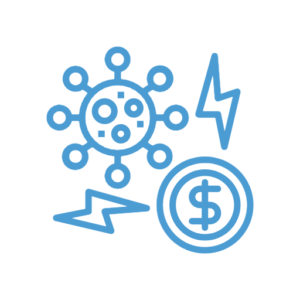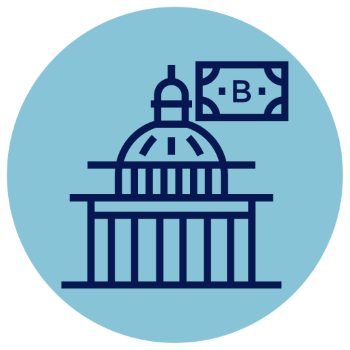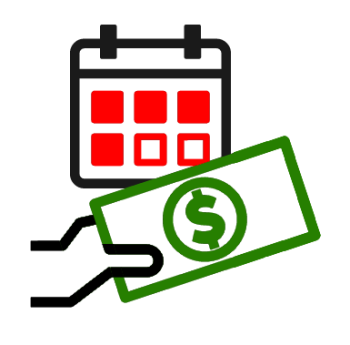At the time of this writing, Congress is debating passing another economic stimulus bill to provide relief against the COVID-19 pandemic. As the pandemic created hardships throughout the country for a year, the U.S. government passed two stimulus bills in 2020 that created or funded multiple financial relief programs for various needs. While there is no program that specifically provides relief to water and wastewater utilities’ losses in revenue, there are several programs funded through the two federal relief bills that can help customers pay past due or current water and/or wastewater bills (“water bills” for short). Water bill payment assistance relieves some of the financial burden on customers that are in most need, and also provides utilities needed revenues to cover unpaid bills and prevent shutoffs in many cases. While there is financial assistance to pay water bills, the fragmentation of the programs can be complicated to navigate. This blog post provides a summary and links to our new factsheets that describe several federally-funded coronavirus relief programs to date that may be used to pay water bills. Information about where customers can go for help is provided.
Tag: coronavirus (Page 1 of 2)

COVID-19 and North Carolina Utilities: Impact Assessment of the Coronavirus Pandemic on North Carolina Water and Wastewater Utilities
August has been a key transition month for local government utilities in North Carolina as EO 124/142 (which prohibited disconnections due to non-payment for residential utility accounts) has expired, payment plans are required to be in place, and Governor Cooper just announced $175 million in relief money, including $122 million for assistance in paying rent and utility bills.
How are water and wastewater utilities across the state faring under COVID-19 conditions? We’ve been keeping track here at the EFC and though the circumstances are constantly changing, we’ve been able to assess some of the impacts of COVID-19 on utilities during the last five months.
We have just released a report funded by Division of Water Infrastructure in the Department of Environmental Quality, outlining results from a poll, analysis of the EO 124/142 data that utilities reported to the North Carolina Utilities Commission (NCUC) for the full April through July period that covered the statewide moratorium, stories of individual utilities (blog post coming soon), and an overview of our financial resiliency tool. Continue reading

How Utilities in the Past have Saved Money during Economic Hardship: Similarities and Differences for COVID-19
Co-written by Erin Ansbro
Right now, water utilities are facing great uncertainty about the coming months and years. When will moratoria on water shut-offs end? When will water consumption be back to “normal”? Will utility staff get COVID-19? And the “Big One” — What will revenue loss be for utilities in the coming months and years? While answers to these questions remain unknown during these unprecedented times, guidance from the past can help utilities think through strategies that may save them money now and in the future. Here, we distill information from a previous EFC report about approaches utilities took in response to the Great Recession of 2008-2009 and discuss how the findings relate to circumstances under COVID-19 conditions.
The report, written in partnership with the Water Research Foundation, comes from ideas discussed during a two-day forum with 17 CEOs of utilities which serve between 78,000 to 19 million customers. During the forum, leaders “discussed how they acted to mitigate the recession’s impact and adapt to a changed financial and economic environment” (p. xi). Although these approaches were used by large utilities, some may be appropriate for smaller utilities. These approaches are starting points for consideration, but are NOT intended to be a specific road map or a recipe for success. In addition to the overarching themes and summary, the report lists some future research needs and then gives details on the 48 strategies implemented by the forum participants. Continue reading
Municipal Bonds & COVID-19: What is going on?
Prior to the outbreak of COVID-19 in the US, the municipal (“muni”) bond market was strong. Investors looking for a non-taxable rate of return were hungry for municipal bonds, driving interest rates down for borrowers (state and local governments) and pushing more debt into the marketplace. Most governments have a cap on the amount of non-taxable municipal bonds they can issue, so many had expanded to include taxable bonds (at a higher rate of return for investors and a higher interest rate for borrowing).
Historically, muni bonds have been very low risk. The rate of default on municipal bonds is very low, and investors see muni bonds as a safe haven for return. The rate of return is often quite low, as determined by the safety of investment, but from a portfolio standpoint, they are a safe addition. As of the end of 2019, the muni bond market was incredibly strong; perhaps the strongest it has ever been. Many state and local governments had strong “rainy day funds” or days of cash on hand, making the risk of default even lower and the bond rating even higher.
Then, COVID-19 made its way to the US and changed the marketplace. Muni bonds have historically performed well during economic downturns, as issuers rarely default– specifically those with great bond ratings. COVID-19 changed this perspective within the market. Investors began selling off everything, including municipal bonds, leaving issued debt sitting in the market unclaimed and driving up interest rates for borrowers. The stock market followed suit, dropping rapidly over just a matter of days, pushing many to wonder if the US was headed for another recession. Why did this happen? And most importantly, what is next? Continue reading
Local governments have an increased public health responsibility to ensure that people have access to clean water during the COVID-19 pandemic. During this time, many utilities are refraining from shutting off customers’ water, despite unpaid bills. In more than a dozen states, mandates have even been put in place to prevent utility service shut-offs for customers. While it is a common practice during the crisis, utilities lose a tool to ensure collections from customers. Furthermore, many utilities will experience significant declines in water use from non-residential customers. The reduction in revenue could put utilities in a difficult financial position.
Many utilities may not be able to generate the revenues needed to cover their expenses this year. In that case, utilities may have to rely on their reserves to cover the gap. How long will utilities be able to last during this pandemic without recovering all of their expenses through revenues? This leads us to analyze a key financial indicator that approximates unrestricted reserves: days cash on hand. To put it simply, days cash on hand is the amount of saved and unrestricted cash a system has and how long it will be able to pay for daily operations before it runs out. For additional information on days cash on hand see our previous blog post.
At this point, it is unknown how long utilities might expect to operate under current COVID-19 conditions, which dictates how much they will need to rely on their reserves. According to Washington Post’s William Wan, it was two and a half months from the time of outbreak before COVID-19 peaked in China and restrictions began to lift. Given the uncertainty, it is important to examine the financial sustainability of utilities at various lengths of time. Here we will be analyzing the impact of the virus shutdown continuing for two, three, and four months. Additionally, we will compare present regional differences between utilities in North Carolina and Arizona. Continue reading





